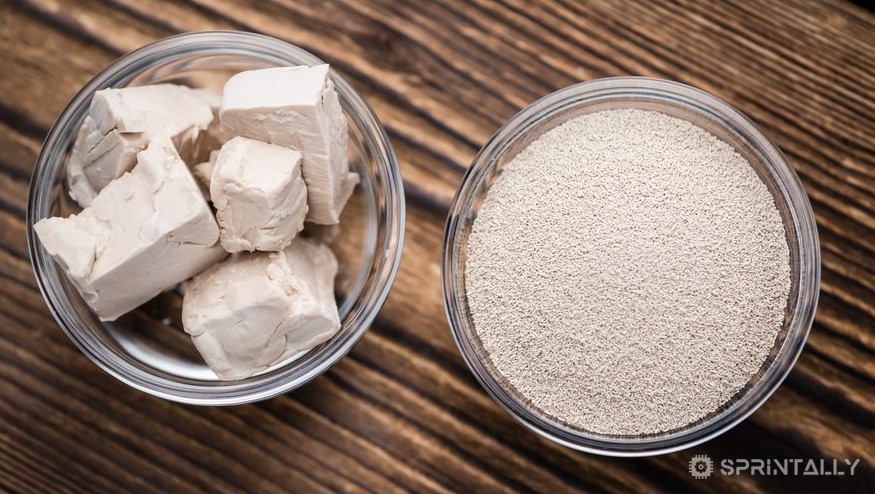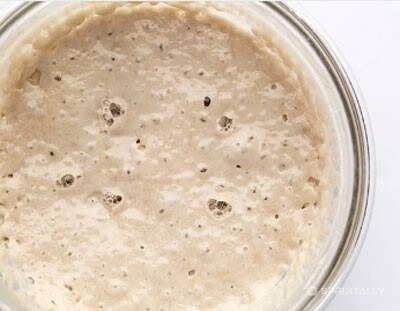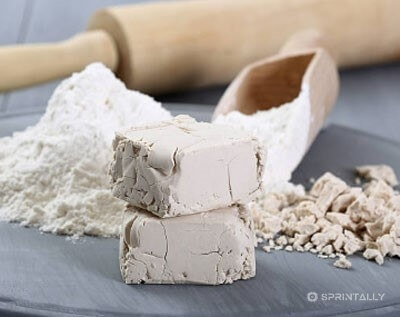Yeast – types, use and properties

Biologists consider yeast to be a group of single-celled fungi; however, these mushrooms are arranged somewhat differently than others, since their habitat and diet have changed greatly in the process of evolution.
Yeasts live in liquid or semi-liquid substrates in which there are a lot of organic substances: for example, in a sugar solution left for a few days indoors at room temperature, foam appears, and the smell becomes alcoholic - this is the yeast that has got from the air into the solution and begins to actively grow. and multiply.

People know about yeast for a long time: for thousands of years, they have been used in the preparation of alcohol - from ale and cider to alcohol and whiskey. The solution for yeast can be prepared any: grape and apple, hop and malt, wheat, rye, etc.; You can also use potatoes, molasses, and other foods.
Bread people also learned how to bake with yeast, but to find them could only in the mid-nineteenth century did Louis Pasteur, and he realized that they represent organisms that reproduce by budding, and the substances that cause fermentation, are produced in them during their growth.
Chemical and vitamin composition
The chemical composition of yeast is highly unstable: it depends on their type – for today there are about 1500 species and from the environment in which they breed. Normally yeast contains ¾ of water and ¼ dry matter, which, in turn, consists of inorganic substances, carbohydrates, nitrogen, protein, and fat.
Inorganic substances contain mainly phosphoric acid and potassium. The carbohydrate part of yeast contains polysaccharides and yeast proteins many amino acids, including all essential; fat is saturated and polyunsaturated fatty acids.
The vitamin composition of yeast is vitamins of group B, vitamins E, H, and vitamin-like substance. It takes 1–1.5 g per day for a person. , phosphorus, calcium, etc.
The main types of yeast

Types of yeast have learned to recognize already in the late XIX-early XX century: scientists have conducted many experiments and papers on the subject was written too much.
Among the main types of yeast used today in different industries that include: Baker's, compressed, active dry and instant, beer and wine.
The easiest way to buy Baker's yeast – they are in every grocery store in small bags; they are stored for a long time, and using them is also very simple to prepare the dough for baking with yeast is easy, even a child.
Compressed yeast is also called pastry, and storing them is much more difficult, without a refrigerator, they become useless for 2 weeks, but at a higher ambient temperature is above 30°C they go bad in 3-4 days. It is best to store them in the freezer, but on the bottom shelf of the fridge, they can keep their basic properties about 2-months. Before using compressed yeast should be dissolved in warm water.
Dry yeast lives much longer if unopened: in a cool dry place, they can be stored for about 2 years. Open the yeast will have to put in the fridge in a sealed container, but they will retain their properties for no longer than 4 months.
Active dry yeast dissolved in warm water – 1 part of yeast to 4 parts water, leave for 10 minutes and then stir and wait for some time.
Instant yeast possesses practically the same properties and uses them almost the same, but after 10 minutes, dissolved in warm water, they are ready to eat, just water we need to take more – 5 parts and 1 part yeast.
All of these types of yeast will maintain its activity longer if you put them in a deep freeze, but changes in temperature is bad for them – their cells are destroyed, so need to defrost them gradually and dissolve in lukewarm water.
Brewer's yeast is different from those used for the test, and their species very much, so different Beers have a different flavor, color and other characteristics. For example, the ale is made with a special yeast that are less sensitive to alcohol than other types. Brewer's yeast usually exists in a liquid form, and to dissolve them before use is not required.
Yeast is used for making kvass, but in this case, participate in the process and lactic acid bacteria.
Yeast for making champagne and other wines more adapted to life in environments with high alcohol content and a higher temperature – other yeasts in such circumstances usually die quickly.
There are other types of yeast used for baking is a food or dietary yeast: they are subjected to heat treatment and become inactive, but their cells are not destroyed, proteins, vitamins and other nutrients "alive". In such yeast and lots of vitamins and they are usually sold in pharmacies and departments of healthy eating – they love vegetarians.
There is also a yeast, but a man better not to eat: they are grown specifically for feeding animals, including birds and fish – in such yeast can add non-plant raw materials – for example, petroleum fractions. Fodder yeast is part of many feeds and supplements for animals.
How to apply yeast
Different types of yeast are used today in different fields: in the industry - especially in baking; brewing and kvass preparing; in the wine industry; in the manufacture of certain dairy products; in cooking; in medicine as a therapeutic and prophylactic agent.
In yeast, a lot of proteins and vitamins, so you can add them to various dishes and experiments in this direction took place in the 30s of XX century, but the yeast in this sense, the "not caught". It is believed that you can add them to the sour, fresh, and green soup, soup and stewed vegetables, and sauces – onion and white. You should not use the yeast in the first and second dish – it makes meals monotonous, and they get bored quickly; they should not apply more than 2 times per week.
In the first dish, the yeast should put no more than 20 grams per serving: first, they are sauteed, then add to the onions and roots, and are sauteed together again, put all in a saucepan with the first dish, and boil for another 25 minutes.
Yeast dough must be prepared as directed on package with yeast: is usually placed from 10 to 50 g per 1 kg of flour. If sugar, eggs, and butter in the dough are put a lot, you should increase the amount of yeast used.

Long-term stored yeast before using best to check: pour a little yeast with warm water (1 tbsp), add 1 tsp of sugar and wait 10 minutes – if you see bubbles, the yeast can be used.
You can prepare the yeast from the beer: mix the flour with warm water (1 Cup), and after 5-6 hours, add beer and 1 tablespoon of sugar, stir and leave for a while in a warm place. When yeast is suitable, they knead the dough – like yeast-it is lush, tender, and tasty.
What are the medicinal properties?
All types of yeast have many medicinal properties. Natural brewer's and baker's yeast can be used for medicinal purposes; special preparations are also prepared with them - for example, hepatitis, usually prescribed to children and adolescents for disorders of the central nervous system, furunculosis and other skin problems, metabolic disorders, and vitamin B deficiency
What other health benefits of yeast? In liquid form, the yeast can be administered orally to improve the absorbability of nutrients, improve the functioning of the intestine, stomach, and pancreas; increase the body's resistance to diseases caused by bacteria and viruses. Liquid yeast is more active in this respect than dry. Yeast is also very useful for enterocolitis, gastritis, peptic ulcer, and for recovery from severe illnesses.

To be treated with yeast should not be alone – their dose should be prescribed by a doctor, depending on the individual characteristics of the organism. The average dose of dry yeast per day – 25 grams fresh – 100 g, yeast paste – 50 g, liquid yeast – 500 g
Cautions and side effects
Overdose possible side effects: diarrhea, flatulence, feeling of heaviness in the stomach and "stomach", belching, etc. you can Not use the yeast for medicinal purposes in some types of polyarthritis and severe renal impairment.





